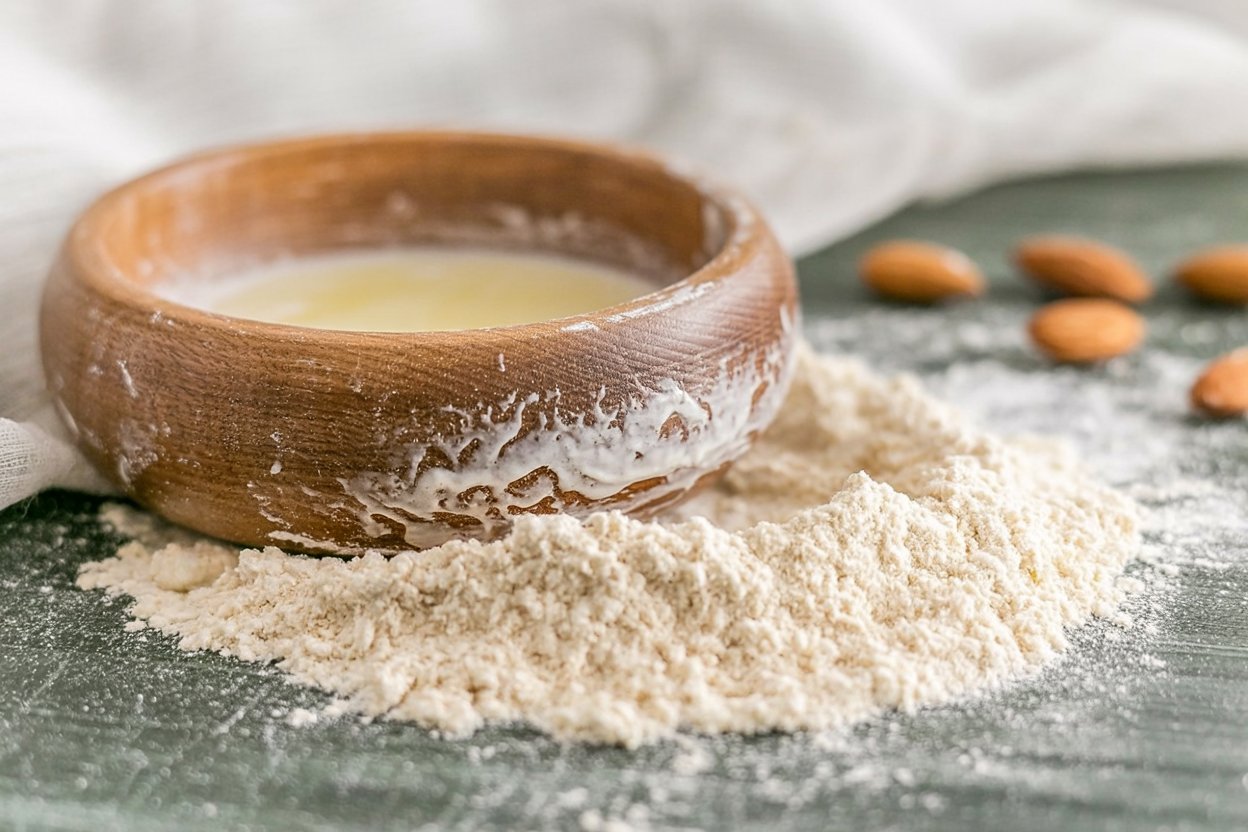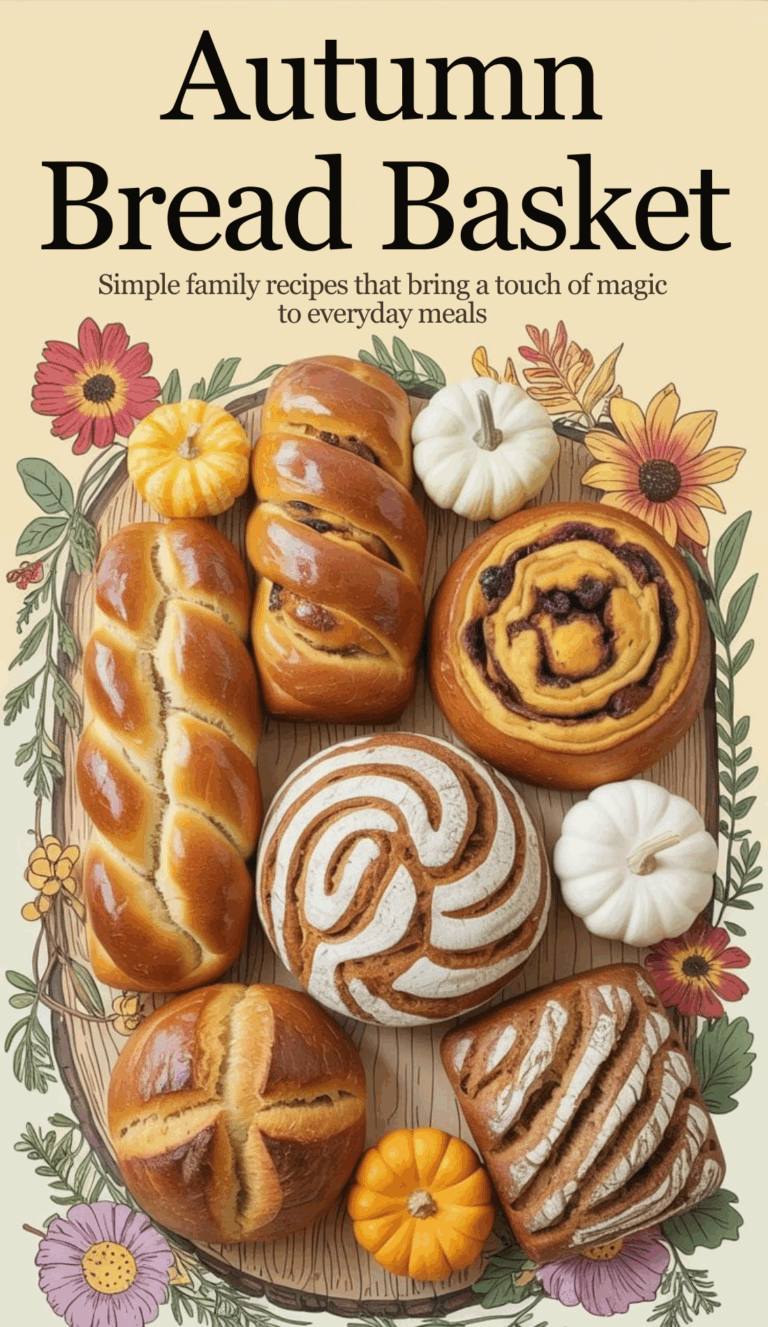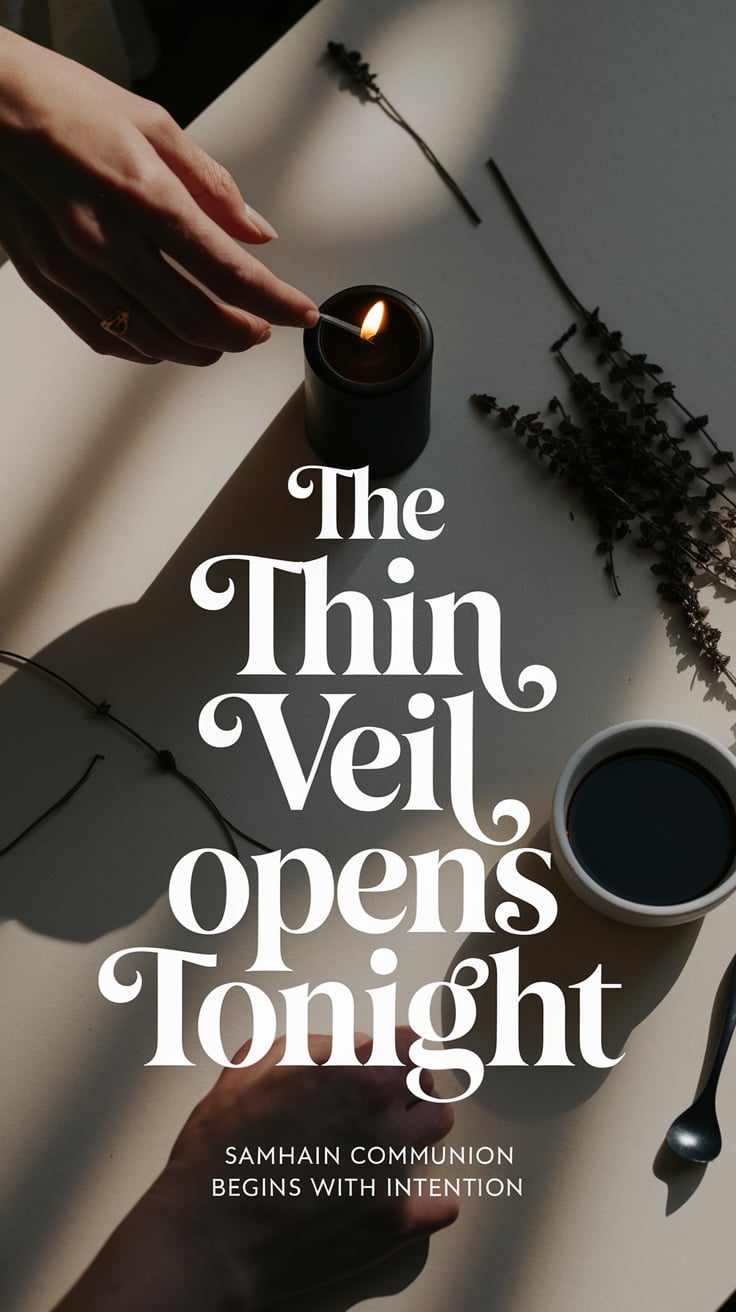Austrian Vanillekipferl for Lunar Work: A Full Moon Cookie Recipe
Please note that posts on this site may contain affiliate links
You can make crescent-shaped cookies for full moon rituals by adapting the Austrian vanillekipferl recipe: buttery almond crescents dusted with vanilla sugar. The shape honors the entire lunar cycle (the journey from dark to full and back), not just the peak moment. Bake them on or near the full moon, set your intention while shaping each crescent by hand, and use them as offerings, ritual food for gatherings, or solo meditation tools.
Here’s why the crescent shape matters specifically for full moon work. The full moon arrives as the culmination of a journey that includes the waxing crescent, the first quarter, and everything in between. When you shape crescent cookies and eat them at the full moon, you’re acknowledging that fullness includes the path to get there. The shadow edge stays present even at maximum brightness. This keeps full moon celebration grounded in reality by recognizing peak moments as part of the larger cycle.
These cookies come from the Austrian Christmas tradition, adapted here for lunar practice. The recipe works because repetitive hand-shaping creates a trance state (the same reason churning butter or kneading bread has always been ritual technology). Let’s start with the actual recipe, then dig into why each ingredient matters and how to frame the baking as ritual work.
- Crescent Moon Spell Cookies Recipe
- Why Crescent Shapes for the Full Moon?
- Magical Correspondences of Ingredients
- The Butter Witch and Repetitive Magic
- From Austrian Christmas to Lunar Ritual
- The Neuroscience of Ritual Baking
- How to Make Cookie Baking a Ritual
- Ways to Use These Cookies in Full Moon Practice
- Pairing Crescent Cookies with Other Lunar Work
- Bringing It Together
Crescent Moon Spell Cookies Recipe
This makes about 24 cookies. They keep well in an airtight container for up to a week, though they tend to disappear faster than that.
Ingredients:
- 1 cup unsalted butter, softened
- 2/3 cup powdered sugar, plus extra for dusting
- 1 egg yolk
- 1/2 teaspoon vanilla extract
- 1/4 teaspoon almond extract
- 1/4 teaspoon salt
- 2 cups all-purpose flour
- 1 cup almond flour
- Optional: 1/2 cup finely chopped almonds for extra texture
Instructions:
- Make the dough. In a large bowl, cream the butter and powdered sugar until light and fluffy. This takes about 3 minutes with an electric mixer. Add the egg yolk, vanilla extract, almond extract, and salt. Mix until everything comes together smoothly.
- Add the flour. Gradually mix in the all-purpose flour and almond flour. If you’re using chopped almonds, fold them in now. The dough should be cohesive but not sticky. If it feels too soft, chill it for 15 minutes.
- Shape the crescents. This is the meditative part. Take about a tablespoon of dough and roll it between your palms into a log roughly 3 inches long. Taper both ends so they’re thinner than the middle. Gently curve the log into a crescent shape. The repetitive motion of rolling and shaping creates the trance state that makes this ritual baking instead of just cooking.
- Prepare for baking. Preheat your oven to 325°F (165°C). Line baking sheets with parchment paper. Place the crescents about 2 inches apart. They don’t spread much, but they need room to breathe.
- Bake. Put them in the oven for 13 to 14 minutes. You’re looking for the edges to turn lightly golden. The centers will still look pale. These cookies are delicate, so don’t overbake them or they’ll be dry instead of melt-in-your-mouth tender.
- Dust while warm. Let the cookies cool on the baking sheet for 5 minutes. While they’re still warm (this matters), roll each one in powdered sugar. The warmth helps the sugar stick and creates that frosted moonlight appearance. Transfer to a wire rack to cool completely.
Storage: Keep in an airtight container at room temperature. The powdered sugar coating stays pretty for about three days, then starts to absorb into the cookie. You can re-dust them before using them for ritual work if needed.

Why Crescent Shapes for the Full Moon?
The question makes sense. Why would you bake crescents for the full moon when crescents are what you see during waxing and waning phases?
Because the full moon exists as part of a cycle, not as an isolated event. When you look up at a full moon, you’re seeing the result of two weeks of waxing. In another two weeks, it will wane back to dark. The crescent moon symbolism that appears in witchcraft traditions across cultures represents transformation, the movement between states, the visible edge where light meets shadow.
Baking crescent shapes for the full moon acknowledges this. You’re celebrating completion while remembering that completion is temporary. The cycle continues. The shadow will return. Moon phase timing teaches us that each phase feeds into the next one. Nothing exists in isolation.
Look at it this way. The full moon is like standing at the peak of a mountain. You can see in all directions. The view is incredible. But you got there by climbing up (waxing), and you’ll descend back down (waning). The peak moment matters because of the journey to and from it. Crescent cookies at full moon are edible reminders of this truth.
This perspective keeps full moon work grounded. You’re treating fullness as temporary and connected to darkness. You’re holding both at once. The journey and the arrival. The becoming and the completion. The edge and the center.
Magical Correspondences of Ingredients
Every ingredient in these cookies carries associations from how people have used them historically and what their qualities suggest. These correspondences come from cross-cultural magical practice, not arbitrary assignment.
| Ingredient | Element | Planet/Association | Magical Properties |
|---|---|---|---|
| Almonds | Air | Mercury | Wisdom through cycles, prosperity, spiritual insight, rebirth (early spring flowering) |
| Butter | Water | Moon | Transformation, prosperity, protection (Irish folklore) |
| Sugar | Water | Venus | Sweetening situations, love, harmony |
| Vanilla Extract | Water | Venus | Calming, enhancing, romantic energy |
| Egg Yolks | Water | Moon | Fertility, creativity, new beginnings |
| All-Purpose Flour | Earth | Saturn | Grounding, stability, manifestation |
| Salt | Earth | Earth | Purification, protection, warding negativity |
Almonds get associated with Mercury and the air element across multiple magical traditions. They flower in very early spring, sometimes while snow is still on the ground, which gives them rebirth symbolism. That early flowering also connects them to wisdom that arrives before its time, insight that comes ahead of the obvious signs. Almond’s connection to Mercury and wisdom shows up in grimoire traditions where almond oil anoints objects meant to enhance mental clarity.
Butter deserves its own section (coming next), but the short version: European folk magic, especially Irish tradition, treated butter as a substance that needed protection from magical theft. The transformation from cream to solid, the value it represented, the repetitive action of churning: all of this made butter a carrier of prosperity magic and a target for the so-called butter witch.
Egg yolks look like little moons. The doctrine of signatures (the idea that how something looks suggests its use) isn’t perfect, but sometimes it tracks. Yolks carry the potential for new life, which connects them to fertility and creative beginnings.
Salt does the practical work of balancing sweetness in baking, and the magical work of purification and protection. A pinch of salt in ritual food grounds the sweetness, keeps it from being cloying, reminds you that protection matters even in celebration.
The combination creates cookies that taste rich and buttery, slightly nutty from the almond, with that distinctive vanilla sweetness. Magically, they carry moon energy (butter, egg yolk), wisdom (almond), sweetness (sugar, vanilla), and grounded protection (flour, salt). You’re eating transformation made manifest.

The Butter Witch and Repetitive Magic
There’s a reason butter appears in these cookies beyond flavor. Irish butter witch folklore documents a whole system of belief around dairy magic. For centuries in rural Ireland (and across Europe), people believed certain individuals could steal the goodness from their neighbor’s milk or prevent butter from forming during churning.
Butter was valuable. It represented stored wealth. A family’s butter production could mean the difference between comfort and poverty. So when churning became a vulnerable moment, people developed protection practices. They put iron near the churn. They said specific prayers. They never let strangers watch the churning process.
The churn itself became a kind of threshold. The repetitive up-and-down motion of the dasher, the time it took (sometimes an hour or more), the uncertain outcome (would the butter come or not?): all of this created a liminal space where magic could enter. The person churning entered a trance state from the repetitive motion. Their mind could wander. Time felt different.
Here’s the connection to cookie-baking. When you shape these crescents, you’re doing the same motion over and over. Roll the dough, taper the ends, curve it. Roll, taper, curve. After the fifth or sixth cookie, your hands know what to do without your full attention. Your mind can drift into that same trance state that churning induced. The repetitive action becomes the portal.
This is why witches have always recognized that certain kinds of work (churning, kneading, stirring, spinning, shaping) carry magical potential. The repetitive motion creates an altered state. In that altered state, intention can sink deeper. What you think about while shaping cookies gets woven into the cookies themselves.
The butter in the recipe connects you to this folk magic tradition. You’re working with a substance that European folk practitioners knew required protection and intention. The act of shaping connects you to the repetitive labor that has always been witch work. The combination makes kitchen magic that’s grounded in real historical practice.
From Austrian Christmas to Lunar Ritual
These cookies come from somewhere specific. Vanillekipferl are Austrian Christmas cookies with the first written record appearing in the 12th century. “Kipferl” means crescent in German. The shape is traditional to Central European baking.
Marie Antoinette supposedly had a hand in making them popular in France (legend more than verified history, but a good story). Austrian grandmothers have been making them for centuries. They show up on Christmas cookie plates across German-speaking Europe. The traditional recipe uses hazelnuts or walnuts as often as almonds, and always includes that distinctive vanilla sugar coating.
So what are we doing adapting a Christmas cookie to lunar magic? We’re having a conversation between tradition and contemporary need. This is adaptation. It’s a European folk tradition that’s open for adaptation because it’s not a closed cultural practice. You’re taking a recipe that works and giving it new context.
This kind of adaptation happens all the time in kitchen witchery. You learn a recipe from your grandmother or from a cookbook or from the internet. You notice it has a useful shape (crescents) or meaningful ingredients (butter, almond). You recognize how the making of it could serve ritual purposes (the repetitive shaping, the timing with moon phases, the sharing of food). You adapt it.
The key is being honest about origins. These are Austrian Christmas cookies that work beautifully for lunar practice when you understand what you’re doing and why. The crescent shape predates both Christmas and contemporary paganism. Lunar observation predates both. You’re connecting those dots in your own practice.
When you make these cookies, you’re participating in a lineage of people who have shaped crescent cookies for centuries, and you’re branching that lineage in a new direction. Both things can be true at once.

The Neuroscience of Ritual Baking
There are observable reasons why ritual baking works. Repetitive ritual actions reduce anxiety by creating predictability and engaging multiple brain systems at once. When you bake, you’re using motor skills (hands shaping dough), sensory processing (smells, textures, temperatures), working memory (following recipe steps), and attention systems (timing, monitoring).
The repetitive nature of shaping each crescent individually does something specific to your nervous system. Ritual performance alters brain activity in measurable ways. It lowers cortisol (the stress hormone). It increases feelings of control and confidence. It creates a state where the default mode network (the part of your brain that generates self-focused rumination) quiets down.
Think about what happens when you shape the tenth cookie. Your hands know the motion. You don’t have to think about how much pressure to apply or how to taper the ends. The action becomes automatic. That’s when your conscious mind can relax into a different state. You’re present with the doing, but you’re not effortfully controlling every moment.
This is the same state that meditation aims for, but you’re getting there through physical repetition instead of breath focus. Witches have known this for centuries without having fMRI machines to prove it. The stirring of the cauldron, the kneading of bread, the spinning of thread—all of these repetitive actions create trance states.
When you set an intention before starting to shape cookies, that intention gets reinforced with every repetition. You’re thinking it (or feeling it, or holding it loosely in your awareness) twenty-four times as you shape twenty-four cookies. The repetition wires it deeper into your nervous system than a single statement of intent would.
The smell of butter and vanilla baking also triggers the limbic system, the part of your brain that processes emotion and memory. Scent bypasses the thinking brain and goes straight to feeling. The combination of repetitive motion, scent, and stated intention creates a full sensory-motor-emotional experience. That’s more powerful than just saying words.
This is why baking can be ritual technology. You’re using your body and brain’s natural responses to create a state where intention becomes embodied. The magic is real because the neurological effects are real. The cookies become vessels for that embodied intention.
How to Make Cookie Baking a Ritual
You can bake these as regular cookies and they’ll taste great. Or you can frame the entire process as ritual work. Here’s how to do that.
Before you start:
- Clear your kitchen space. This can be simple. Open a window, wipe down your counter, put away clutter that doesn’t relate to baking. You’re creating clean physical and mental space.
- Set a clear intention. What aspect of the full moon are you working with? Completion? Gratitude? Celebrating something that reached fullness this cycle? Name it specifically.
- Wash your hands with awareness. You’re cleansing before sacred work.
While mixing and shaping:
- Stay present with each action. Notice the texture of the butter softening, the smell of vanilla, the way the dough comes together.
- As you shape each crescent, you can speak your intention aloud or hold it silently. Some people like a repeated phrase. Something like: “As the moon completes its cycle, I honor what has reached fullness.” Or: “Journey and arrival, shadow and light, I hold both.” Choose words that feel natural to you, or work in silence.
- If your mind wanders (it will), that’s fine. Come back to the sensation of shaping when you notice. The repetitive action is the anchor.
Timing:
- Ideally, bake these on the day of the full moon or within 24 hours before or after. The energy is strongest during that window.
- If you want to go deeper, check what time the moon technically becomes full and try to have the cookies in the oven near that time. Some people like the precision of timing it exactly.
After baking:
- Let the first cookie you taste be a conscious act. Sit down. Hold it. Look at the crescent shape. Eat it slowly. Notice the texture, the sweetness, the way it melts.
- The cookies are ready to use however serves your practice.
You can make this as simple or elaborate as feels right. The core elements are: clear space, stated intention, present awareness during repetitive shaping, conscious eating of the result. Everything else is optional.

Ways to Use These Cookies in Full Moon Practice
Once you’ve made them, you have options.
As offerings:
Place a few cookies on your altar for lunar deities. Full moon offerings across cultures have included food and sweets for centuries. If you work with Artemis, Hecate, Selene, or Luna, crescent cookies fit their symbolism perfectly. The sweetness honors them, the shape acknowledges their domain. Leave the cookies there for the night of the full moon, then dispose of them respectfully (bury them or leave them outside for animals).
For a more specific devotional practice for Artemis, crescent cookies connect to her role as moon goddess and her association with the bow (which is crescent-shaped). The precision of the recipe and the skill of shaping mirrors the focus she represents.
In ritual sharing:
Full moon gatherings become more grounded when they include actual food. These cookies are small enough that everyone can have one without feeling too full, sweet enough to feel celebratory, and shaped meaningfully enough to spark conversation. When you share ritual food, you’re creating common experience. Everyone has eaten the same thing, shaped with the same intention.
Pass them around a circle and have each person name something that reached completion this cycle before eating. Or share them silently and let each person sit with their own reflection. The sharing itself becomes the ritual.
For solo reflection:
Make a cup of tea (the The Magic of Full Moon Tea book has recipes if you want to go deep with this). Sit somewhere you can see the moon if possible. Eat one cookie slowly while thinking about what came to fullness this month. What started as a new moon intention that has now manifested? What relationship or project reached a peak? What insight arrived?
The cookie becomes a focusing object for this reflection. Each bite is a moment to sit with gratitude or completion or whatever the full moon represents in your current cycle.
As gratitude practice:
This works especially well if you made 24 cookies. That’s a lot of small opportunities for appreciation. Each cookie can represent something you’re grateful for this cycle. You can eat them over several days, naming a different thing each time. Or use them to mark moments of recognition when you notice something has come to fruition.
The physical act of eating becomes the acknowledgment. You’re literally taking in the sweetness of what has manifested.
Pairing Crescent Cookies with Other Lunar Work
These cookies work as part of a broader full moon practice.
If you’re drawn to working with both light and shadow aspects of the moon, consider pairing these bright crescent cookies with lavender cookies for chthonic deities. The contrast creates a fuller picture. Crescent cookies for the visible moon, lavender cookies for what lies beneath. Together they represent the complete cycle, the seen and unseen, the celebrated peak and the necessary depth.
These pair naturally with tea rituals. Brew a cup of something lunar (chamomile, jasmine, mugwort if you’re not pregnant) and sit with a cookie or two while the moon rises. The combination of warm drink and sweet cookie creates comfort that helps you drop into reflective state.
If you’re building a full moon altar, these cookies can sit alongside white candles, moonstone, silver items, and fresh flowers. They’re temporary (you’ll eat them or dispose of them after a few days), which reminds you that peak moments don’t last. The altar changes as the moon wanes. This is appropriate.
You can also work these into a longer lunar cycle practice where you do something different at each phase. New moon setting intentions, waxing moon taking action, full moon celebrating completion with these cookies, waning moon releasing what didn’t serve. The cookies mark the peak moment in that progression.
Bringing It Together
When you bake crescent-shaped cookies for the full moon, you’re doing several things at once.
You’re making buttery, melt-in-your-mouth cookies that taste like vanilla and almond, crisp on the edges and tender in the center. You’re participating in a Central European baking tradition that stretches back centuries and adapting it to contemporary lunar practice. You’re entering a trance state through repetitive hand-shaping that connects you to the liminal space witches have always worked in. You’re creating edible reminders that fullness includes the journey to and from it, that crescents belong at the full moon because the shadow edge is always present.
The next time the moon reaches full, try these. Mix the dough. Shape the crescents one at a time. Let the repetition create the altered state. Dust them with sugar while they’re still warm. Eat one slowly while the moon rises.
Kitchen magic works because transformation happens in kitchens. Flour and butter and sugar become cookies. Attention and intention become ritual. The ordinary becomes sacred by recognizing what’s already true about it. The moon cycles whether you notice or not. Baking crescents at the peak is just one way to notice.







